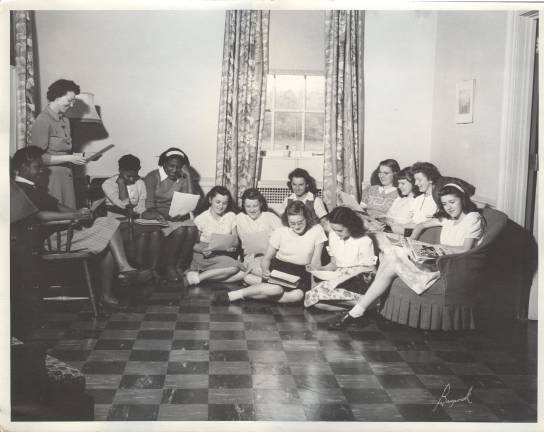C.J. Hooker's history told through 75 years of artifacts

By Frances Ruth Harris
GOSHEN — The gym at C.J. Hooker Middle School will turn into a museum, complete with tours and lectures, to celebrate the school building's 75th anniversary.
The special event, open to the public, will be held from 10 a.m to 3 p.m. on Saturday, April 2.
Chrissy Pahucki made the announcement at the March 7 meeting of the Goshen school board. She teaches art in grades 6 through 8 at C.J. Hooker.
Education in Goshen started in 1773 with the opening of the Farmer's Hall Academy — which is now Goshen Town Hall. One of its most notable teachers and principals was Noah Webster of dictionary fame. A quill-shaped weathervane atop town hall pays tribute to this history.
Many other small private and public schools opened in the years following. Many had only one or two rooms, like the Stone Schoolhouse on 17M between, Goshen and Florida, which opened sometime before 1792.
The consolidation of schools accompanied the rise of the automobile. Some schools in the village consolidated in 1911, when the Yellow Brick School opened on the corner of Main and Erie Streets. Charles J. Hooker became principal of the Erie Street School in 1924.
In 1937, voters approved the consolidation of 13 rural school districts into one, the Goshen Central School District.
Franklin Delano Roosevelt's New Deal provided the money for building C.J. Hooker. Voters didn't approve the original building plans. The proposition was rejected by 33 votes.
The building's architect simplified the design to reduce costs, eliminating two more cupolas and flattening the peaked roofs over the gym and auditorium. The redesigned plan passed by just 17 votes.
Construction on "the new high school" began in 1939. Despite labor union disputes, work-related injuries, and a hold-up when the workers' payroll was stolen, the building opened in the fall of 1940.
When a new high school was built in the 1970s, C.J. Hooker became today's middle school.
The museum show will include 75 years' worth of artifacts — yearbooks, photographs, sports memorabilia, and furniture — from the library's collection and school's attic and basement.